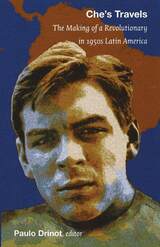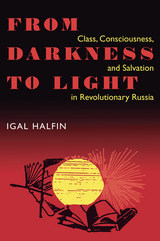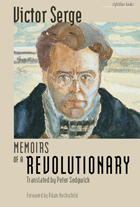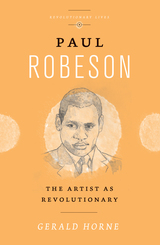6 books about Revolutionary

Che's Travels
The Making of a Revolutionary in 1950s Latin America
Paulo Drinot, ed.
Duke University Press, 2010
Ernesto “Che” Guevara twice traveled across Latin America in the early 1950s. Based on his accounts of those trips (published in English as The Motorcycle Diaries and Back on the Road), as well as other historical sources, Che’s Travels follows Guevara, country by country, from his native Argentina through Chile, Peru, Colombia, and Venezuela, and then from Argentina through Bolivia, Peru, Guatemala, and Mexico. Each essay is focused on a single country and written by an expert in its history. Taken together, the essays shed new light on Che’s formative years by analyzing the distinctive societies, histories, politics, and cultures he encountered on these two trips, the ways they affected him, and the ways he represented them in his travelogues. In addition to offering new insights into Guevara, the essays provide a fresh perspective on Latin America’s experience of the Cold War and the interplay of nationalism and anti-imperialism in the crucial but relatively understudied 1950s. Assessing Che’s legacies in the countries he visited during the two journeys, the contributors examine how he is remembered or memorialized; how he is invoked for political, cultural, and religious purposes; and how perceptions of him affect ideas about the revolutions and counterrevolutions fought in Latin America from the 1960s through the 1980s.
Contributors
Malcolm Deas
Paulo Drinot
Eduardo Elena
Judith Ewell
Cindy Forster
Patience A. Schell
Eric Zolov
Ann Zulawski
[more]

From Darkness To Light
Class, Consciousness, & Salvation In Revolutionary
Igal Halfin
University of Pittsburgh Press, 2000
In this interdisciplinary and controversial work, Igal Halfin takes an original and provocative stance on Marxist theory, and attempts to break down the divisions between history, philosophy, and literary theory.
[more]

Memoirs of a Revolutionary
Victor Serge
University of Iowa Press, 2002

My Life As A Revolutionary
Reflections Of A Former Guerrillera
Maria Eugenia Vasquez Perdomo
Temple University Press, 2005
In My Life as a Colombian Revolutionary, María Eugenia Vásquez Perdomo presents a gripping account of her experiences as a member of M-19, one of the most successful guerrilla movements in Colombia's tumultuous modern history. Vásquez's remarkable story opens with her happy childhood in a middle-class provincial household in which she was encouraged to be adventurous and inquisitive. As an eighteen-year-old university student in Bogotá, María Eugenia embraced radical politics and committed herself to militant action to rid her country of an abusive government. Dedicated and daring, Vásquez took part in some of the M-19's boldest operations in the 1970s and 1980s and became one of its leaders. She was able to avoid detection for nearly twenty years in the movement because she was both clever and considered too attractive to be a guerrillera. Her vivid narrative brings to life the men and women who were her comrades and conveys their anxiety and exhilaration as they carried out their actions. When she tells of her love affairs with some of M-19's top leaders, she cannot separate romance from camaraderie or escape a sense of impending tragedy. If Vásquez gave us only a rare insider's account of youth culture and a guerrilla movement in a Latin American country, this would be a book well worth reading. But she also gives us an unsparing analysis of what it meant to be a woman in the movement and how much her commitment to radical politics cost her.
[more]

Paul Robeson
The Artist as Revolutionary
Gerald Horne
Pluto Press, 2015
***Winner PEN Oakland Josephine Miles Book Award***
“A fine, taut analysis of the great African American athlete, singer, actor, and political activist.”
—Choice, Highly Recommended
Paul Robeson should be remembered today as the forerunner of Malcolm X, Dr. Martin Luther King, Jr. and Muhammad Ali. He sacrificed his fame and fortune a performer and athlete in order to fight for the rights of African Americans during the time of Jim Crow and U.S. Apartheid.
A world-famous singer and actor, a trained lawyer, an early star of American professional football and a polyglot who spoke over a dozen languages: these could be the crowning achievements of a life well-lived. Yet for Paul Robeson the higher calling of social justice led him to abandon both the NFL and Hollywood and become one of the most important political activists of his generation, a crusader for freedom and equality who battled both Jim Crow and US Senator Joseph McCarthy during the communist witch hunt of the 1950s.
In Paul Robeson: The Artist as Revolutionary, Gerald Horne discovers within Robeson's remarkable and revolutionary life the story of the twentieth century's great political struggles: against racism, against colonialism, against poverty—and for international socialism. Chapters include:
*”The Best Known American in the World"
*Rising Revolutionary
*From Moscow to Madrid
*"Black Stalin"?
*Robeson: Primary Victim of the "Blacklist"
*Triumph—and Tragedy
*Death of a Revolutionary
In the Introduction, Horne writes: “Paul Robeson—activist, artist, athlete—experienced a dramatic rise and fall, perhaps unparalleled in U.S. history. From mingling with the elite of London society and Hollywood in the 1930s, by the time he died in 1976, he was a virtual recluse in a plain abode in a working-class neighborhood of Philadelphia. What helps to explicate this tragic art of his life is a fateful decision he made when fascism was rising: he threw in his lot with those battling for socialism and decide to sacrifice his thriving artistic career on behalf of the struggle against Jim Crow—or U.S. apartheid.”
This critical and searching biography provides an opportunity for readers to comprehend the triumphs and tragedies of the revolutionary progressive movement of which Paul Robeson was not just a part, but perhaps its most resonant symbol.
“A fine, taut analysis of the great African American athlete, singer, actor, and political activist.”
—Choice, Highly Recommended
Paul Robeson should be remembered today as the forerunner of Malcolm X, Dr. Martin Luther King, Jr. and Muhammad Ali. He sacrificed his fame and fortune a performer and athlete in order to fight for the rights of African Americans during the time of Jim Crow and U.S. Apartheid.
A world-famous singer and actor, a trained lawyer, an early star of American professional football and a polyglot who spoke over a dozen languages: these could be the crowning achievements of a life well-lived. Yet for Paul Robeson the higher calling of social justice led him to abandon both the NFL and Hollywood and become one of the most important political activists of his generation, a crusader for freedom and equality who battled both Jim Crow and US Senator Joseph McCarthy during the communist witch hunt of the 1950s.
In Paul Robeson: The Artist as Revolutionary, Gerald Horne discovers within Robeson's remarkable and revolutionary life the story of the twentieth century's great political struggles: against racism, against colonialism, against poverty—and for international socialism. Chapters include:
*”The Best Known American in the World"
*Rising Revolutionary
*From Moscow to Madrid
*"Black Stalin"?
*Robeson: Primary Victim of the "Blacklist"
*Triumph—and Tragedy
*Death of a Revolutionary
In the Introduction, Horne writes: “Paul Robeson—activist, artist, athlete—experienced a dramatic rise and fall, perhaps unparalleled in U.S. history. From mingling with the elite of London society and Hollywood in the 1930s, by the time he died in 1976, he was a virtual recluse in a plain abode in a working-class neighborhood of Philadelphia. What helps to explicate this tragic art of his life is a fateful decision he made when fascism was rising: he threw in his lot with those battling for socialism and decide to sacrifice his thriving artistic career on behalf of the struggle against Jim Crow—or U.S. apartheid.”
This critical and searching biography provides an opportunity for readers to comprehend the triumphs and tragedies of the revolutionary progressive movement of which Paul Robeson was not just a part, but perhaps its most resonant symbol.
[more]

Percy Bysshe Shelley
Poet and Revolutionary
Jaqueline Mulhallen
Pluto Press, 2015
Today, Percy Bysshe Shelley is an emblem of the Romantic movement and one of the lights of English culture—his poems memorized by schoolchildren, his life honored with a memorial in Westminster Abbey’s Poets’ Corner. That wasn’t always the case, however. In his own day, Shelley was widely loathed, seen as an immoral atheist and a traitor to his class for his revolutionary politics. His work was damned as well, receiving scathing reviews rooted as much in disapproval of his politics and personal life as in the verse itself. That’s the Shelley that Jacqueline Mulhallen brings to life in this accessible, political biography: the Shelley who, though writing when the working class was in its infancy, clearly grasped—and wanted to change—the system of oppression under which laborers and women lived. The revolutionary Shelley, Mulhallen shows, has long served as an inspiration to figures from Karl Marx to W. B. Yeats to the poets and writers of today, and for popular movements like the Chartists and the suffragettes, even as his public image and poetry became part of the establishment.
An engaging look at one of English history and literature’s most compelling, complicated, and talented figures, Percy Bysshe Shelley will be a valuable contribution to our understanding of the man and his work.
An engaging look at one of English history and literature’s most compelling, complicated, and talented figures, Percy Bysshe Shelley will be a valuable contribution to our understanding of the man and his work.
[more]
READERS
Browse our collection.
PUBLISHERS
See BiblioVault's publisher services.
STUDENT SERVICES
Files for college accessibility offices.
UChicago Accessibility Resources
home | accessibility | search | about | contact us
BiblioVault ® 2001 - 2024
The University of Chicago Press









